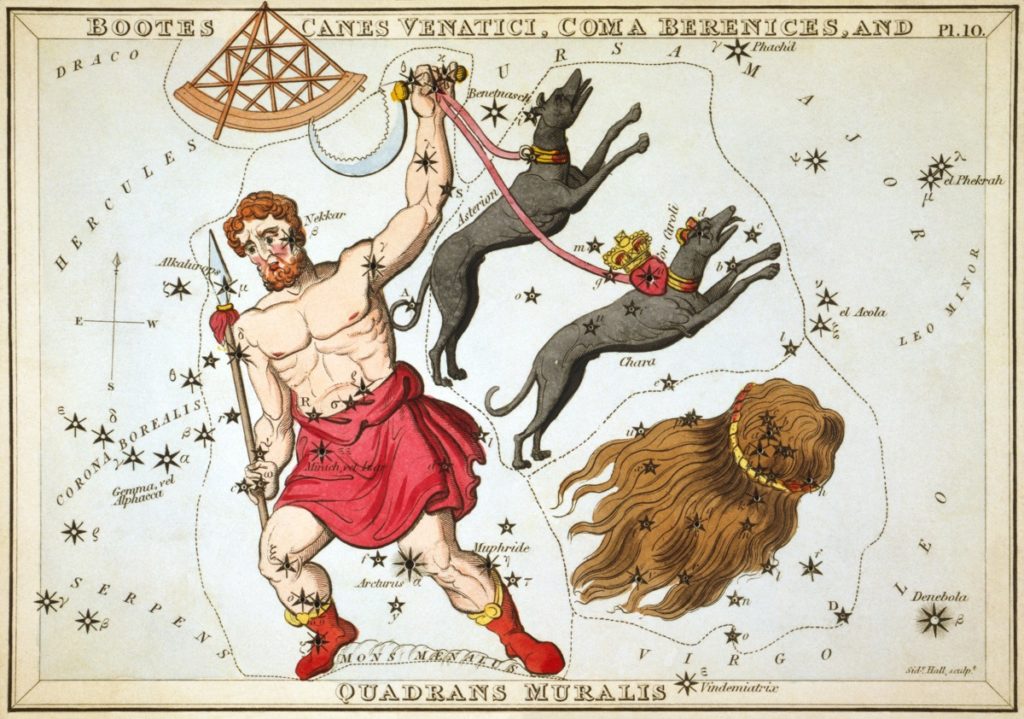
Just under the handle of the Big Dipper lies the dim constellation Canes Venatici, the Hunting Dogs, one of ten star groups devised by the 17th century astronomer Johannes Hevelius. Serving as the mayor of Danzig by day, Hevelius, understandably, preferred astronomy to politics and worked diligently to map the Moon, observe sunspots, and modernize maps of the northern night sky. In devising this constellation, he took into account past astronomical references to the two stars south of the Dipper’s handle as “hunting dogs” held on a leash by the huntsman represented by the constellation Bootes as they snapped at the hindquarters of the great bear of Ursa Major.
The brighter of the two stars in this dim constellation is 3rd-magnitude Alpha Canes Venaticorum, more informally called Cor Caroli, the ‘Heart of Charles’. The star was named after Charles I, the unfortunate monarch caught in the buzz saw of the English Civil War and beheaded in 1649. The fainter is 4th-magnitude Beta Canes Venaticorum, also known as Chara. As for the rest of the constellation, it isn’t much to look at. Like the adjacent Coma Berenices, few bright stars lie here because we’re looking in a direction out of the plane of the Milky Way and into intergalactic space. But there are plenty of galaxies here, and a couple of other deep-sky objects of note for backyard stargazers. Let’s take a short tour of a handful of highlights in this little constellation.
A Double Star in the ‘Heart of Charles’
Cor Caroli itself is a pretty double star, easily split in a small telescope even at 30-40x. The blue-white primary shines at magnitude 2.9; the fainter yellow companion is magnitude 5.6 some 19” away from the primary. The pair lies about 110 light years away. The brighter of the two components of Cor Caroli is formally called α2 (alpha-2) Canes Venaticorum. It’s an unusual type of variable star with peculiar concentrations of silicon, mercury, and europium in its atmosphere. It also has an intense magnetic field, more than 5,000x stronger than Earth’s, that creates enormous “starspots”, similar to our sun’s sunspots. The starspots move in and out of view as the star rotates, causing variability in overall brightness.
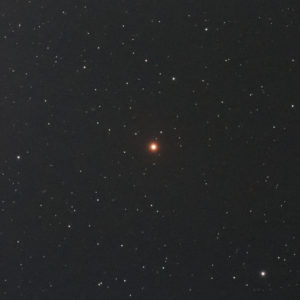
A ‘Superb’ Carbon Star
Some 6o northeast of Cor Caroli, look for the unmistakable dull-red glow of the cool red-giant star Y Canes Venaticorum. You may need a pair of binoculars or a finderscope to see it, although it lies just within reach of visual observation at peak brightness. Also called “La Superba”, this cool variable star has an atmosphere rich in molecular carbon compounds that block and scatter all but red and infrared light from shining through. This makes it far redder than nearly any other star in the sky. It’s one of the most famous examples of a carbon star. Once you have it in your sights, defocus your optics slightly to help your eye perceive its deep red hue. The star’s brightness varies from magnitude 4.9 to 7.3 over a roughly 160 day period.
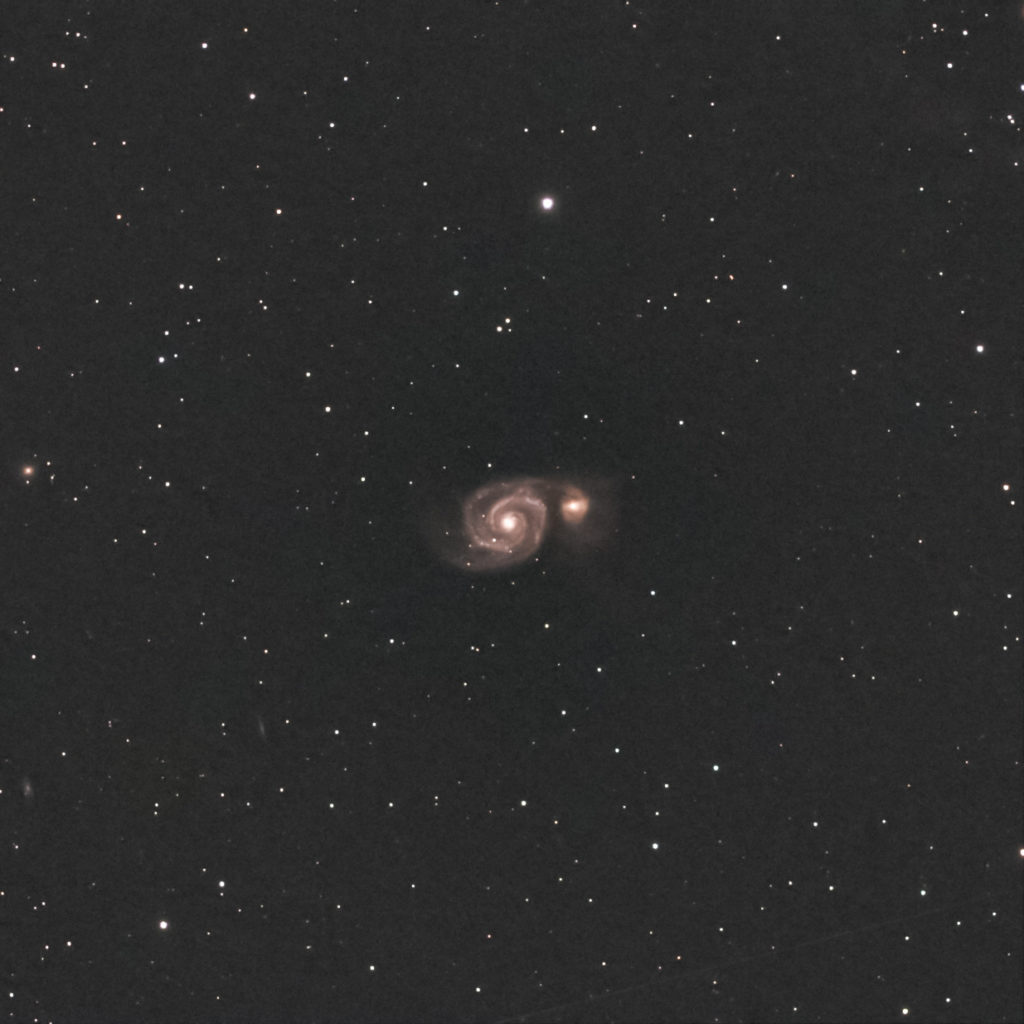
The Whirlpool Galaxy
Of the dozens of galaxies that lie within Canes Venatici, the most famous and arguably most beautiful is the Whirlpool Galaxy. Two galaxies lie here, in fact, the grand face-on spiral galaxy M51 and a smaller misshapen companion galaxy NGC5195. This interacting system ranks as a favorite of both imagers and visual observers because of its size and brightness and intricate detail. Visually, an 8” to 10” scope in dark sky easily shows the spiral arms of M51 and its companion. Because of its size and brightness, this 8th-magnitude system is also the perfect galaxy for beginning (and expert) astrophotographers. The galaxy was first photographed in 1889 (!) by a British amateur with his 20” Cassegrain telescope with a metal speculum primary mirror.
M51 features spiral arms clotted with pink star-forming nebula and blue-white associations of bright new stars. The exaggerated rate of star formation likely arises because of the gravitational tug of NGC5195 which compresses the gas and dust in the spiral arms of the bigger galaxy. The two galaxies lie at a distance of 31 million light years, although NGC5195 is passing somewhat behind M51.
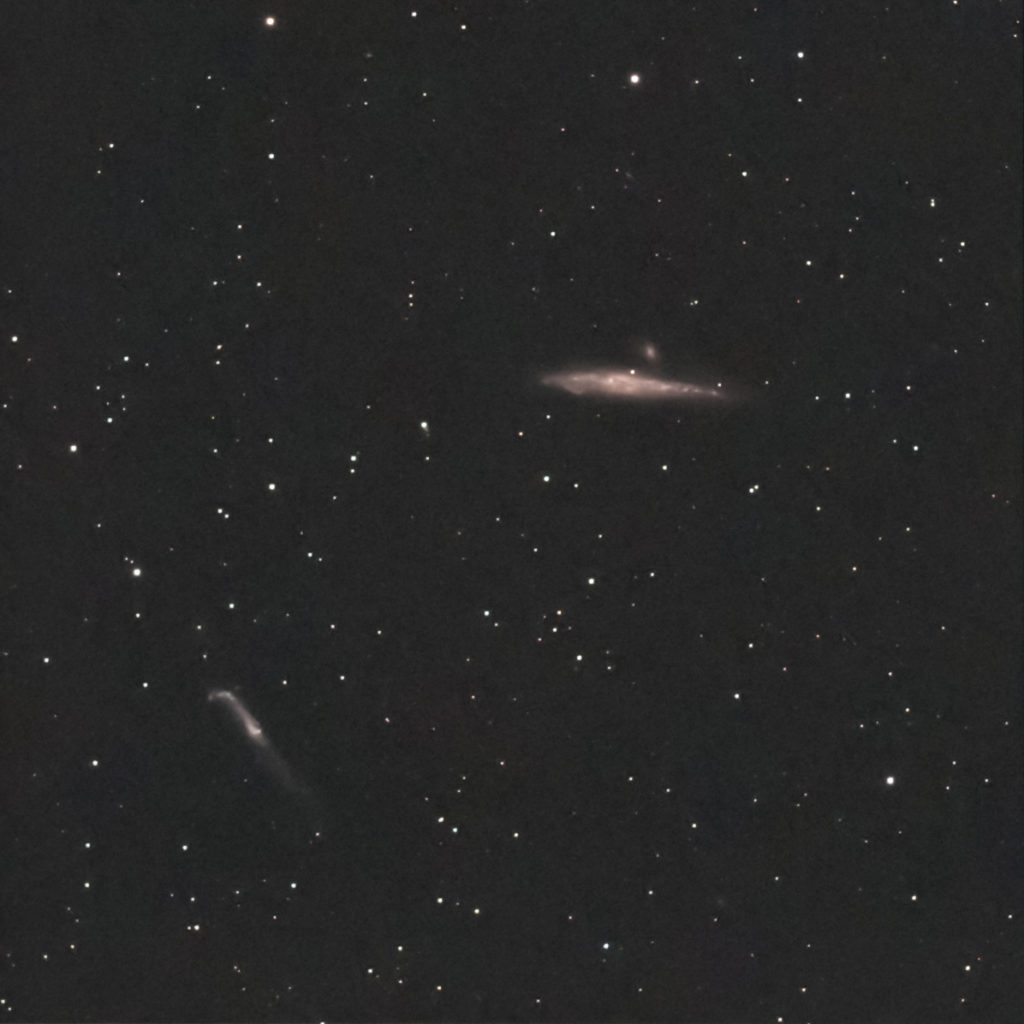
A Whale and Pup and a Hockey Stick
Another perturbed galaxy pair lies within Canes Venatici, the long, slender, and nearly edge-on spiral NGC4631 and its smaller companion galaxy NGC4627 that both lie at a distance of some 24 million light-years. Together they form the ‘Whale and Pup’ galaxies. At magnitude 8.9 and with an apparent length of 14”, the ‘Whale’ is visible in a pair of 80mm binoculars, while the smaller 13th-magnitude ‘Pup’ spans just 2” and requires an 8” or larger telescope. Imagers can capture the pair with much smaller optics. About 0.7o southeast of the Whale and Pup lies an even stranger-looking galaxy pair, NGC4656 and NGC4657, that resemble a button hook or (especially for us Canadian observers) a hockey stick. The Hockey Stick galaxy is gravitationally bound to the larger NGC4631. It shines at magnitude 9.5 and lies at a distance of about 17 million light-years.
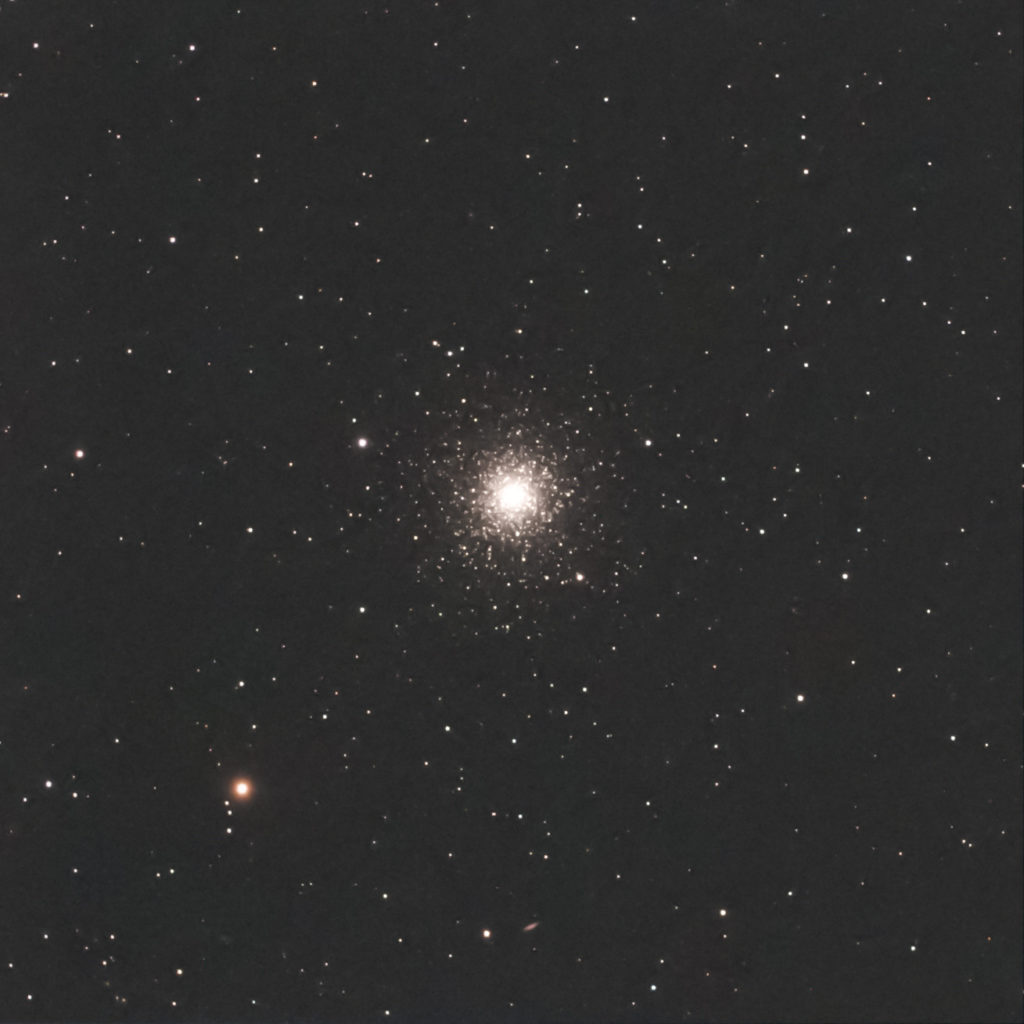
Messier 3, Spring’s Best Globular Cluster
Finally on this little tour, let’s look about halfway between Arcturus and Cor Caroli to see the superb Messier 3 which, along with M13 and M5, is one of the brightest and most pleasing globular clusters in the northern sky. At magnitude 6.4, this cluster is visible in binoculars or a finderscope as a faint smudge. The cluster also serves as an excellent test of vision and sky clarity because it’s just on the limit of detection without optics. A 4” scope at 100x resolves the halo into grainy silver pinpricks, and an 8” scope nearly resolves the cluster to its core where it bursts into a ball of of fine jewel-chip stars with arcs and streams flowing outward.
The cluster contains about 500,000 stars. It also has more than 200 known variable stars, the largest of any globular. The stars in M3 also have a higher abundance of heavier elements than most such stars. As a consequence, astronomers estimate M3 is younger than most globulars, with an age of some 8 billion years.
Share This: